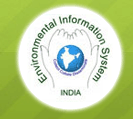Waste Disposal
The proportion of households reporting removal of household waste by household members was much higher (94%) in rural areas than that (71%) in urban areas. While 14% and 12% of urban households reported removal of their waste by local authorities and by private agreement among residents, respectively, the corresponding proportions were almost negligible in rural areas.
About two-thirds (67%) of rural households, and less than a third (30%) of urban households, reported their waste being taken to individual dumping spots. While a substantial proportion (47%) of urban households reported removal of their waste to community dumping spot, only 4% of rural households reported so.
Percentage distribution of households by arrangement of removal of garbage from house during 1998.
Sector |
% Of households reporting removal of garbage by |
Local authorities |
Private arrangement among residents |
Household members |
Other arrangement |
n.r. |
All |
Rural |
0.7 |
1.8 |
94.2 |
3.2 |
0.1 |
100 |
Urban |
13.7 |
11.9 |
71.2 |
3.2 |
0.0 |
100 |
Percentage distribution of households by site where garbage is shifted after removal from house during 1998
Sector |
Percentage of households reporting garbage shifted to |
Bio-gas plant or manure pit |
Community dumping spot |
Household’s individual dumping spot(s) |
Other |
n.r |
all |
Rural |
6.9 |
3.5 |
66.6 |
22.8 |
0.2 |
100 |
Urban |
1.4 |
47.2 |
29.6 |
21.7 |
0.1 |
100 |
Other Aspects of Hygiene
Water for cooking/bathing/washing utensils: In rural areas, for the purpose of cooking or bathing or washing utensils, tubewell/handpump, followed by well and tap, were the more important sources of water - principal or secondary. In urban areas, this order of importance was tap, tubewell/handpump and well and tap for secondary source.
Concern about problems of flies, mosquitoes and foul odour: Among these three, people reported their concern most frequently for mosquitoes (84% in rural and 90% in urban areas) followed by that for flies (69% in rural and 66% in urban areas). Only about 36% of rural and about 50% of urban households reported their concern about problems related to foul odour.
Percentage of households expressing concern about problem of flies, mosquitos and foul odour during 1998.
Sector |
Percentage of households expressing concern about problems of |
flies |
mosquitoes |
foul odour |
Rural |
68.5 |
84.0 |
36.1 |
Urban |
65.8 |
89.6 |
50.1 |
Percentage distribution of households by principal and supplementary source of water for cooking, water for bathing and water for washing utensils during 1998
Source |
Percentage of households (Rural) using water for |
Cooking |
Bathing |
Washing utensils |
Principal source |
Supple-
mentary source |
Principal source |
Supple-
mentary source |
Principal source |
Supple-
mentary source |
Tap |
17.9 |
6.6 |
15.8 |
5.5 |
16.5 |
6.6 |
Tubewell, handpump |
51.5 |
36.9 |
44.2 |
36.5 |
48.3 |
36.8 |
Well |
23.9 |
36.0 |
21.8 |
32.4 |
23.6 |
32.7 |
Tank/pond reserved for drinking |
1.2 |
2.7 |
1.5 |
2.1 |
1.2 |
2.4 |
Other tank/pond |
1.8 |
5.0 |
9.8 |
9.0 |
6.4 |
8.5 |
River/canal/lake |
1.3 |
6.3 |
4.1 |
9.2 |
1.7 |
7.5 |
Spring |
1.8 |
3.3 |
2.0 |
2.8 |
1.8 |
2.8 |
Tanker |
0.2 |
1.6 |
0.1 |
1.3 |
0.1 |
1.3 |
Others |
0.4 |
1.6 |
0.4 |
1.2 |
0.3 |
1.3 |
All |
100 |
100 |
100 |
100 |
100 |
100 |
Source |
Percentage of households (Urban) using water for |
Tap |
69.8 |
12.1 |
63.8 |
13.3 |
63.5 |
13.1 |
Tubewell, handpump |
21.3 |
53.1 |
23.7 |
52.9 |
24.7 |
54.3 |
Well |
6.8 |
22.9 |
8.6 |
19.6 |
9.2 |
20.1 |
Tank/pond reserved for drinking |
0.3 |
0.9 |
0.3 |
0.8 |
0.3 |
0.7 |
Other tank/pond |
0.3 |
1.3 |
2.0 |
4.2 |
0.9 |
3.6 |
River/canal/lake |
0.2 |
3.4 |
0.8 |
3.3 |
0.3 |
2.1 |
Spring |
0.1 |
0.7 |
0.1 |
0.7 |
0.1 |
0.7 |
Tanker |
0.7 |
3.5 |
0.3 |
3.1 |
0.2 |
3.2 |
Others |
0.3 |
2.0 |
0.4 |
2.0 |
0.6 |
2.1 |
All |
100 |
100 |
100 |
100 |
100 |
100 |
Source: NSS Report No. 449 |





